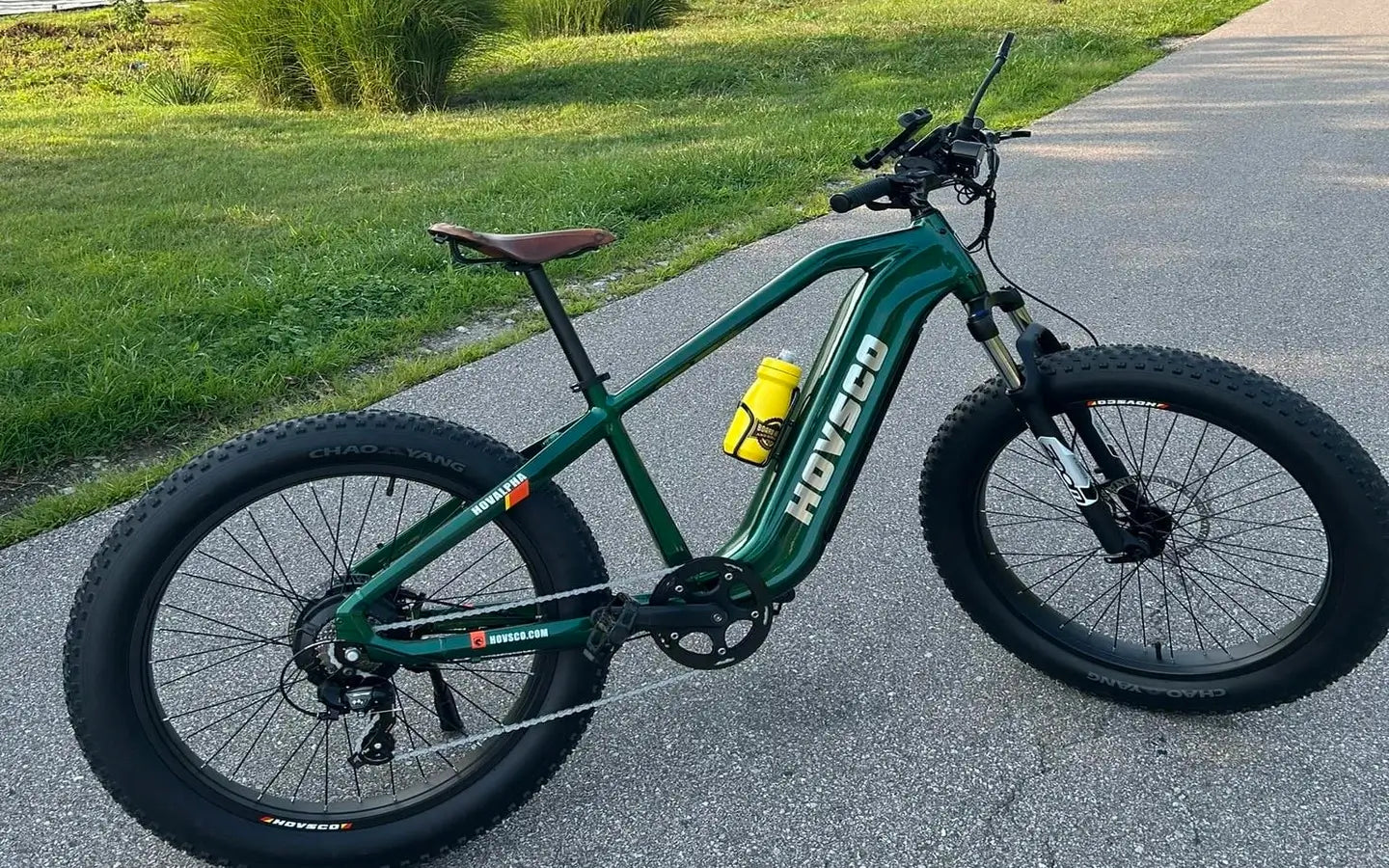
- by LiuJiazhu
Can Full Suspension eBikes Handle Technical Mountain Trail Riding?
- by LiuJiazhu
Full suspension eBikes excel on technical mountain trails due to their dual suspension systems, which absorb impacts, improve traction, and enhance control. While heavier than hardtails, modern designs balance weight with robust motors, responsive dampers, and adjustable settings. For riders tackling rock gardens, steep descents, or root-covered paths, full suspension eBikes deliver the performance and safety needed for demanding terrain. What Are The Benefits Of Full Suspension Mountain Trail Ebikes?
Technical mountain trails feature steep climbs, jagged rocks, root networks, and abrupt drops requiring precise bike handling. Trails are graded "black diamond" or higher, demanding suspension travel >140mm, grippy tires, and stable geometry. Let’s break down what makes these trails challenging.
Technical trails aren’t just rough—they’re unpredictable. Beyond basic trail features like inclines, they include obstacles that test a bike’s stability and a rider’s skill. For example, a trail rated S3 (severe) might have 16-inch drops or rock gardens where rear suspension prevents bucking. Pro Tip: Always check trail ratings and match your eBike’s suspension travel (measured in millimeters) to the terrain. Imagine riding a pogo stick versus a luxury SUV: full suspension acts like the SUV, smoothing out jolts.
| Trail Type | Key Features | Ideal Suspension Travel |
|---|---|---|
| Moderate (Blue) | Rolling terrain, small roots | 120-140mm |
| Technical (Black) | Rocky descents, steep drops | 150-170mm |
Full suspension eBikes keep both wheels grounded over bumps, boosting traction and reducing fatigue. The rear shock absorbs rear-wheel impacts, while the fork handles front obstacles. Here’s why this matters for technical riding.
When your rear wheel hits a rock, the suspension compresses, letting the tire maintain contact instead of bouncing. This prevents loss of control—critical during steep descents. Modern eBikes like the HOVSCO H100 use 160mm travel forks and air shocks adjustable for rider weight. Pro Tip: Set your sag (suspension compression under rider weight) to 25-30% for optimal response. Think of it like walking barefoot on gravel versus wearing cushioned shoes: suspension is your cushion. But what happens when you hit a rock garden at speed? Without rear suspension, the bike deflects sideways; with it, you glide through.
| Feature | Full Suspension | Hardtail |
|---|---|---|
| Traction on Drops | High | Moderate |
| Comfort (1hr+ ride) | Excellent | Fair |
Full suspension eBikes dominate on technical trails due to superior shock absorption, while hardtails suit smoother trails with efficiency. Let’s compare their strengths and trade-offs.
Hardtails, lacking rear suspension, transfer more vibration to the rider, which can lead to arm fatigue on rocky descents. However, they’re lighter and better at power transfer during climbs. Full suspension models counter this with lockout features that stiffen the rear shock for efficient pedaling. Pro Tip: For mixed terrain, choose a full suspension eBike with adjustable damping—lock the rear on climbs, open it for descents. It’s like switching between a road bike and a downhill rig mid-ride. But can a hardtail keep up on a downhill section? Practically speaking, no—without rear suspension, you’ll sacrifice speed and control.
Critical components include suspension travel (150mm+), high-torque motors (85Nm+), and aggressive tread tires. Battery capacity and frame geometry also play vital roles in technical performance.
Mid-drive motors, like the Bafang M620, offer better weight distribution and torque for climbing over ledges. Pair this with tires like the Maxxis Minion DHF (2.5” wide) for grip on loose soil. Pro Tip: Opt for a eBike with a modular battery (e.g., 720Wh) to handle longer, gnarlier rides. Imagine trying to scale a wall with a rope versus a ladder—the right components are your ladder.
eBike weight (avg. 50lbs) can impact maneuverability, but full suspension mitigates this with stability. Strategic motor placement and low-center frames enhance control on drops.
Heavier bikes require more force to change direction, but the weight also improves traction. For instance, a 52lb eBike descending a chute stays planted where a lighter bike might skip. Pro Tip: Keep cargo weight low and centered—avoid heavy backpacks that raise your center of gravity. Think of it as driving a sports car versus a sedan: the eBike’s weight, when balanced, adds confidence-inspiring stability.
Regular maintenance includes cleaning pivot points, checking seal integrity, and lubricating linkages every 100 miles. Suspension services (50-hour intervals) prevent performance degradation.
Dirt in suspension seals accelerates wear, leading to costly repairs. After muddy rides, rinse shocks and apply silicone spray. Pro Tip: Use a torque wrench on pivot bolts—over-tightening strains bearings. It’s like maintaining a race car: skip oil changes, and the engine fails. But what if you ignore suspension maintenance? Expect reduced travel, harsher rides, and eventual component failure.
Yes—models with mid-drive motors and torque sensors provide natural pedal assist, maintaining traction on steep climbs.
Are full suspension eBikes worth the higher cost?For serious trail riders, yes. The control and comfort outweigh the price difference on challenging terrain.
How does battery life hold up on technical trails?Expect 20-30% faster drain due to constant motor engagement. Carry a spare battery for rides over 25 miles.
Share:
What Are The Differences Between Mid-Drive And Hub Motors In Full Suspension eBikes?
Why Choose HOVSCO 1500W Moped-Style?